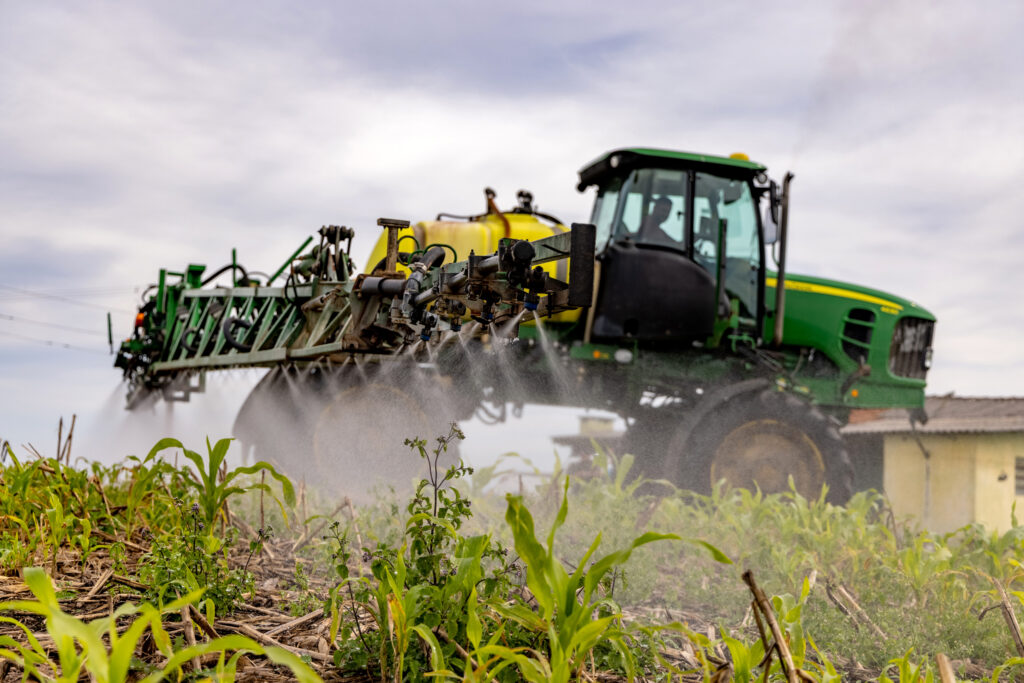At its annual conference on climate change this week, the United Nations released a major report saying the world has little hope of reaching global climate targets without quickly lowering emissions of nitrous oxide, a greenhouse gas that’s nearly 300 times more powerful at warming the atmosphere than carbon dioxide.
Despite their dangers, nitrous oxide emissions, which come mostly from agricultural fertilizers, have somehow been overlooked in climate negotiations as countries have focused on carbon dioxide and, more recently, methane. Yet emissions of this “forgotten” major greenhouse gas are growing rapidly and throw a double punch: They accelerate temperature rise and damage the stratospheric ozone layer that protects people from ultraviolet radiation.
The report, published by the U.N.’s Food and Agriculture Organization, Environment Programme and Climate and Clean Air Coalition, is the first global assessment of nitrous oxide emissions since 2013. Two years after that publication, the nations signed on to the Paris Agreement, pledging to try to keep global temperatures within 1.5 degrees Celsius of pre-industrial levels.
“This assessment makes clear there’s no plausible pathway to 1.5 degrees without ambitious action on nitrous oxide,” said David Kanter, one of the co-chairs of the new report and an environmental studies professor at New York University. “There is a growing understanding that we truly need an all-of-the-above approach.”
That approach, the report says, means finding ways to use fertilizer more efficiently, managing soil so there’s less fertilizer runoff and waste and addressing the underlying causes of fertilizer overuse. That includes limiting consumption of meat and dairy products, which rely on fertilizer-intensive farming to grow feed.
The reports’ authors stress that reducing emissions of nitrous oxide 40 percent by 2050 could have outsized impacts on overall greenhouse gas emissions, while minimizing ozone depletion and bringing other benefits for soil, water quality and human health.
“If we acted ambitiously, we could avoid the equivalent of up to 235 billion tons [of carbon dioxide] by the end of the century,” Kanter said. “Just to put that in context: That’s over six years of CO2 emissions from fossil fuels.”
Kanter and the report’s authors also say that lowering nitrous oxide emissions by that amount could have 12 times the benefit of phasing out ozone-destroying hydrochlorofluorocarbons under the Montreal Protocol, the international treaty agreed to in 1987. The resulting improvement in air quality would prevent 20 million premature deaths, the authors said.
But nitrous oxide, also known as N2O, is not controlled under the Montreal Protocol. “Current anthropogenic emissions are a much greater threat to the ozone layer than any other chemical controlled under the protocol and we are learning now that the same emissions of N2O are responsible for approximately 10 percent of global warming since the industrial revolution,” said Andrew Yatilman, the environment minister of the Federated States of Micronesia, in a panel discussion before the report’s release. “We have a problem.”
Yatilman and others stressed that nitrous oxide emissions, allowed unabated, threaten to undo the ozone and climate benefits achieved through the Montreal Protocol and will harm human health.
“In a world where we focus on carbon dioxide and methane, but do nothing on nitrous oxide—which, arguably, is the world we find ourselves in right now—that is the worst-case scenario for the ozone layer,” Kanter said. “If that comes to pass, most of the world’s population is going to be exposed to levels of ultraviolet radiation which [have] never been seen before in human history—worse than peak ozone depletion.”
Emissions of nitrous oxide from industrial processes, mostly to make certain acids, have been significantly reduced, except in the U.S. and China, which together account for roughly 80 percent of the nitrous oxide from the industrial sector. But John Thompson, deputy assistant secretary for environment in the U.S. Department of State, said the country’s top producers have committed to cutting nitrous oxide emissions and he expects overall industrial emissions to be 50 percent lower next year compared to 2020.
“We are making substantial progress on industrial emissions,” Thompson said.
Agriculture remains the bigger, more stubborn challenge. Since the “green revolution” of the 1960s, which saw a major increase in the use of synthetic fertilizer, nitrous oxide emissions from synthetic fertilizer use have also shot up.
The green revolution is credited with saving thousands of people from malnutrition and starvation. Today, roughly half of the world’s food is produced using synthetic fertilizers. But farmers are using more and more of it, contributing to a rise in nitrous oxide that’s higher than climate scientists anticipated.
“The thing that makes this particularly challenging is that fertilizer is an essential resource,” Kanter said, noting that successful environmental efforts so far have usually centered on eliminating the use of a polluting substance that’s either unnecessary or replaceable. “That’s obviously something we can’t do with synthetic fertilizer—not something we want to do. What we are saying is that we desperately need to increase the efficiency with which that fertilizer is used.”
Since so much of the world’s fertilizer is applied to crops grown as feed for livestock, Kanter added, the solution “has to include diet as well.” Kanter’s comment echoes previous U.N. reports that have called for people, especially in developed countries, to limit livestock-based foods.
The report comes the week before the official “Food, Agriculture and Water Day” at the climate conference, being held this year in Azerbaijan. This thematic day focused on food will include at least one event focused on reducing nitrous oxide emissions from agriculture.
While discussions are underway in Azerbaijan, U.S.-based advocacy groups say that American farm policy has a huge role to play, too.
Congress’ progress on finalizing a farm bill, the massive legislation governing food and farm policy, has stalled over the last year. But a current version of the bill finalized by House Republicans would decrease spending on cover crops, which are grown in the off-season and naturally fix nitrogen in the soil. An analysis earlier this year by the Environmental Working Group found that such a move would release 100,000 metric tons of nitrous oxide and carbon dioxide into the atmosphere.
About This Story
Perhaps you noticed: This story, like all the news we publish, is free to read. That’s because Inside Climate News is a 501c3 nonprofit organization. We do not charge a subscription fee, lock our news behind a paywall, or clutter our website with ads. We make our news on climate and the environment freely available to you and anyone who wants it.
That’s not all. We also share our news for free with scores of other media organizations around the country. Many of them can’t afford to do environmental journalism of their own. We’ve built bureaus from coast to coast to report local stories, collaborate with local newsrooms and co-publish articles so that this vital work is shared as widely as possible.
Two of us launched ICN in 2007. Six years later we earned a Pulitzer Prize for National Reporting, and now we run the oldest and largest dedicated climate newsroom in the nation. We tell the story in all its complexity. We hold polluters accountable. We expose environmental injustice. We debunk misinformation. We scrutinize solutions and inspire action.
Donations from readers like you fund every aspect of what we do. If you don’t already, will you support our ongoing work, our reporting on the biggest crisis facing our planet, and help us reach even more readers in more places?
Please take a moment to make a tax-deductible donation. Every one of them makes a difference.
Thank you,



